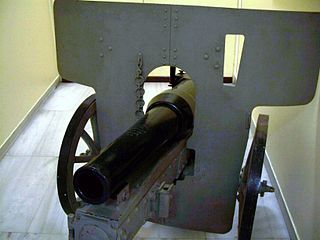 W
WMountain guns are artillery pieces designed for use in mountain warfare and areas where usual wheeled transport is not possible. They are similar to infantry support guns, and are generally capable of being broken down into smaller loads.
 W
WThe 7 cm mountain gun was a Japanese ordnance first used in 1883. Because of the relative expense of steel at the time, the gun was produced with a bronze barrel. The 7 cm was used in the First Sino-Japanese War as the main artillery, and was used again in the Russo-Japanese War by second-line troops.
 W
WThe 10 cm Gebirgshaubitze M 8 was a mountain howitzer used by Austria-Hungary during World War I. It was the first Austrian howitzer to use a modern hydraulic variable-recoil system. It used the same ammunition as the earlier 10 cm Gebirgshaubitze M 99, which was shown to be accurate, but lacked sufficient power to destroy bunkers, during World War I. It had a gun shield. It could be mounted on a special sled carriage designated 10 cm M. 8 Gebirgsschleife designed to allow for high-angle fire between +43° and 70° elevation. This sled was transported on a special bedding cart with removable wheels. The wheels were removed when in position to fire.
 W
WThe 10 cm Gebirgshaubitze M 99 was a mountain howitzer used by Austria-Hungary during World War I. It consisted of the bronze barrel of the 10 cm Feldhaubitze M 99 on a new, narrow-gauge box trail carriage that could be broken down for transport on animal carts. Like its brother, it lacked a modern recoil system, using only an ineffective spring-mounted recoil spade, and was virtually obsolescent upon its introduction. Relatively few were made as the version of the standard 10 cm Feldhaubitze M 99 with a narrow, 1.3-metre (51 in) carriage was cheaper.
 W
WThe 76 mm mountain gun M-48, was developed after the Second World War to meet the requirements of Yugoslav People's Army mountain units, it can also be used as a field gun.
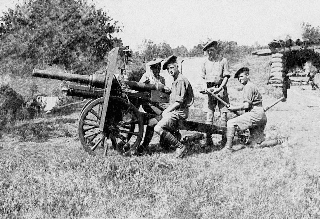 W
WThe Ordnance BL 2.75-inch mountain gun was a screw gun designed for and used by the Indian Mountain Artillery into World War I.
 W
WThe Ordnance BL 10 pounder mountain gun was developed as a BL successor to the RML 2.5 inch screw gun which was outclassed in the Second Boer War.
 W
WThe Bofors 75 mm mountain gun was a Swedish designed and built mountain gun of the interwar years that was used during the Second World War.
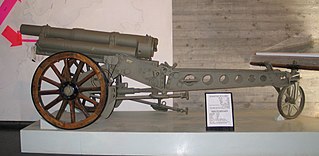 W
WThe Canon de 65 M modele 1906 where M stands for "montagne", or briefly 65 mm Mle 1906 where "mle" stands for "modèle", was a French mountain gun which entered service with the régiments d'artillerie de montagne in 1906 and was one of the first soft-recoil guns in service. The carriage of the Mle 1906 was hinged and could be broken down into four mule loads for transport. By 1939, the weapon was generally used as an infantry support gun. After 1940, the Germans would use these as 6,5 cm GebK 221(f). The gun was also used by Israel, Albania, Poland and Greece.
 W
WThe Canon de 75 M (montagne) modèle 1919 Schneider was a French mountain gun designed as a replacement of the 65 mm mle 1906. The mle 1919 was manufactured by Schneider et Cie and used during World War II. For transport, the gun could be broken down into seven sections. This weapon was used by Brazil, Paraguay, Yugoslavia and Greece. When captured by the Germans in World War II, the French guns were designated 7.5 cm GebK 237(f); the Yugoslav guns were designated 7.5 cm GebK 283(j). The gun crew was protected by an armoured shield.
 W
WThe Canon de 76 M(montagne) modele 1909 Schneider was a mountain gun manufactured by a French company, Schneider. An earlier version, the 75 mm Schneider-Danglis 06/09 had been designed, in 1906, by a Greek officer, who designed it as a 75 mm gun. This gun was used by Greece who, by 1939, had sold 40 of these guns to Finland, where it was known as the 75 LK 13.
 W
WThe M1841 mountain howitzer was a mountain gun used by the United States Army during the mid-nineteenth century, from 1837 to about 1870. It saw service during the Mexican–American War of 1847–1848, the American Indian Wars, and during the American Civil War, 1861–1865.
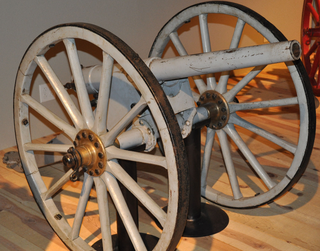 W
WThe M1875 mountain gun was a mountain gun that was used by the United States Army during the last quarter of the nineteenth century.
 W
WThe QF 2.95-inch mountain gun was the designation given by the British to a Vickers 75 mm calibre gun. It was originally produced for the Egyptian Army. It was taken into British service in the late 19th century to provide the 'movable armament' at some coaling stations. Also known as 'The Millimetre Gun', it was used by the West African Frontier Force in several theatres in Africa during World War I. It was also used by United States and Philippines.
 W
WOrdnance, QF 3.7-inch howitzer is a mountain gun, used by British and Commonwealth armies in the First and Second World Wars, and between the wars.
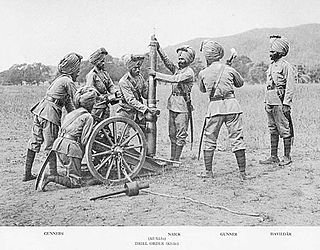 W
WThe Ordnance RML 2.5-inch mountain gun was a British rifled muzzle-loading mountain gun of the late 19th century designed to be broken down into four loads for carrying by man or mule. It was primarily used by the Indian Army.
 W
WThe Ordnance RML 7-pounder Mk IV "Steel Gun" was a rifled muzzle-loading mountain gun primarily used by the Indian Army. 7-pounder referred to the approximate weight of the shell it fired.
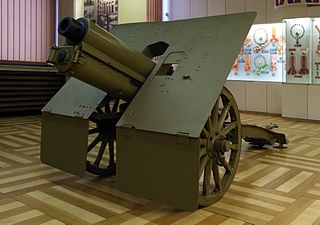 W
WThe Skoda 75 mm Model 1928 was a mountain gun manufactured by Skoda Works and exported to Yugoslavia. It was a modernized version of the Skoda 75 mm Model 15. The gun typically had a 75 mm barrel; however, it could be fitted with a 90 mm barrel. The Wehrmacht redesignated these guns as 7.5 cm GebK 28 or 7.5 cm GebK 285(j). The gun crew was protected by an armoured shield.
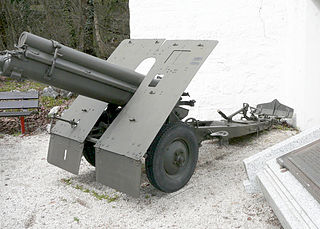 W
WThe Skoda 100 mm Model 1916 was a mountain howitzer used by Austria-Hungary during World War I. The Turks used a 105 mm variant, the M.16(T). The Wehrmacht redesignated this as the 10 cm GebH 16 or 16(ö). Guns acquired from Italy, after 1943, were known as 10 cm GebH 316(i); those acquired from Czechoslovakia were 10 cm GebH 16(t). The Italians referred to weapons gained either through capture or reparations as the Obice da 100/17 modello 16. The gun could be broken into three sections, intended for towing by two animal carts. The gun crew was protected by a gun shield. The Italians used lighter shells than the Czechs, which accounts for the greater range and muzzle velocity of their guns.
 W
WThe Skoda 105 mm Model 1939 was a mountain gun, manufactured by Skoda Works as a companion piece for the 75 mm M.39. This was a revised version of the 100 mm M.16 and 100 mm M.16/19. Like them it was broken down into three loads, each towed by a pair of horses, for transport.
 W
WThe Type 31 75 mm quick-firing gun was the main field gun deployed by the Imperial Japanese Army in the Russo-Japanese War of 1904–1905.
 W
WThe Type 41 75 mm mountain gun is a Japanese license-built copy of the Krupp M1908 mountain gun. The Type 41 number was designated for the year the gun was accepted, the 41st year of Emperor Meiji's reign, 1908 in the Gregorian calendar. Originally it was the standard pack artillery weapon. After it was superseded by the Type 94 75 mm mountain gun, it was then used as an infantry "regimental" gun, deployed four to each infantry regiment, and referred to as "rentai ho". Two gun shields were produced for the weapon, an early type, which folded into thirds, and a late type, which folded in half.